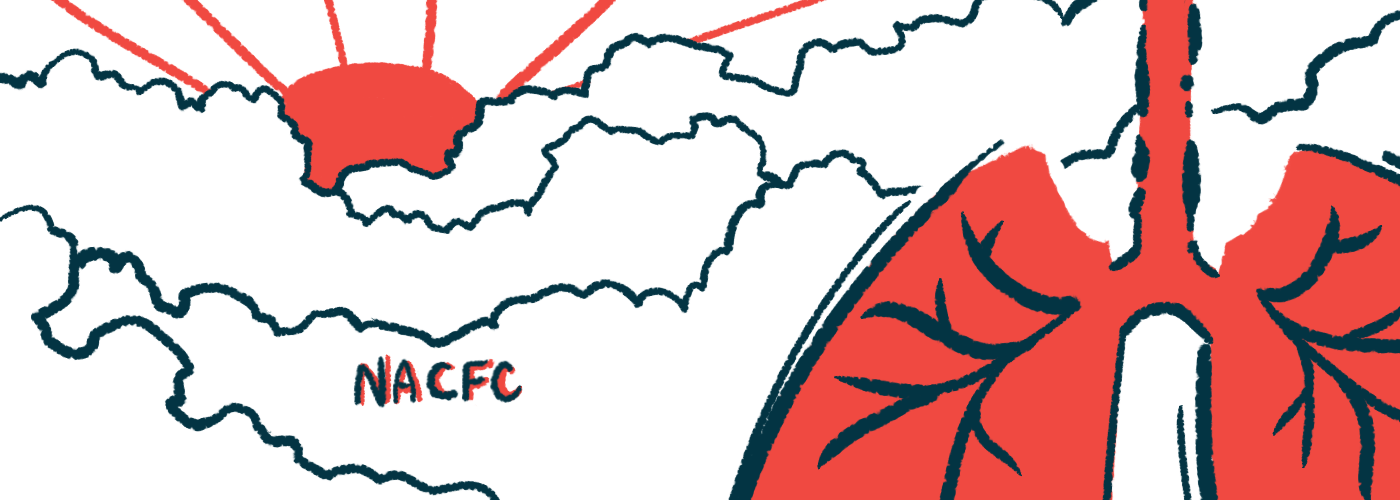#NACFC2022 – Trikafta Benefits Continue After Almost 3 Years
Improved lung function in parent trials continued into long-term extension study
Written by |

The improvements in lung function, respiratory symptoms, and nutritional status with Trikafta are stable after nearly three years in adolescents and adults with cystic fibrosis (CF), according to new data from a long-term extension study.
Results were discussed at the 2022 North American Cystic Fibrosis Conference (NACFC) in the presentation, “Long-term safety and efficacy of elexacaftor/tezacaftor/ivacaftor in people with cystic fibrosis and at least one F508del allele: 144-week interim results from an open-label extension study.” The work was funded by Vertex Pharmaceuticals, which markets Trikafta.
CF is caused by mutations that impair how the CFTR protein functions. Trikafta is a combination therapy containing three CFTR modulators — elexacaftor, tezacaftor, and ivacaftor — that can help improve the protein’s functionality with specific mutations. It’s approved in the U.S. to treat patients with eligible mutations ages 6 and older.
Initial approval of Trikafta was based on data from two Phase 3 clinical trials that tested it in patients ages 12 and up, called AURORA F/MF (NCT03525444) and AURORA F/F (NCT03525548). Results showed Trikafta led to improvements in lung function after about six months.
After the initial comparator portions of these trials ended, participants had the option to continue in an open-label extension study (NCT03525574), where all are being treated with Trikafta and followed for long-term safety and efficacy outcomes. At NACFC, Cori Daines, MD, a professor at the University of Arizona, presented data from that study out to 144 weeks — nearly three years.
Long-term extension results of therapy
It included 506 participants, all of whom carried at least one copy of F508del, the most common CF-causing mutation. Specifically, 107 participants had two copies of this mutation (homozygous), while the other 399 had one copy of F508del and one minimal function mutation (heterozygous).
After 144 weeks, nearly all (98.8%) had reported at least one side effect. Most of these (60.3%) were judged moderate in severity. The most common side effects were pulmonary exacerbations — when lung function suddenly worsens — associated with infections, cough, and headache.
In almost half the participants, the side effects were possibly related or related to Trikafta treatment. Just under 3% of patients had side effects that led them to discontinue or pause treatment. Rates of side effects were lower in the extension study than the original trials.
Trikafta “continued to be generally safe and well tolerated, with no new safety findings,” Daines said.
Lung function was assessed by measuring forced expiratory volume in one second (FEV1), a test of how much air someone can blow out in a second. There were no significant differences in FEV1 improvement between patients given Trikafta or a placebo in original trials. All F508del homozygous patients had been on Symdeko in the parent study.
Better lung function with Trikafta seen in the parent studies was maintained in the extension trial, meaning lung function appeared largely stable over nearly three years of Trikafta.
Among those given a placebo in the original trials, the average rate of pulmonary exacerbations was 0.98 per 48 weeks (almost one year) during the initial study. When participants were on Trikafta in the open-label extension, the average exacerbation rate was markedly lower, roughly 0.2 per year.
Taking both F508del and heterozygous groups together, the yearly rate of change in percent predicted FEV1 was 0.07. The limitations in social interactions due to the COVID-19 pandemic may have boosted the positive effect of Trikafta in lowering pulmonary exacerbations, Daines said.
Decreases in sweat chloride levels and improvements in the respiratory domain of the Cystic Fibrosis Questionnaire Revised — an instrument of health-related quality of life — were comparable to the parent stutdies. Also sustained were the increases in body mass index, a measure of body fat.
“The clinically meaningful improvements in lung function, respiratory symptoms, CFTR function (assessed via decreases in [sweat chloride] concentration), and nutritional status observed in the parent studies were maintained through an additional 144 weeks of [Trikafta] treatment,” Daines concluded.
Note: The Cystic Fibrosis News Today team is providing in-depth coverage of the 2022 North American Cystic Fibrosis Conference (NACFC) Nov. 3-5. Go here to see the latest stories from the conference.







